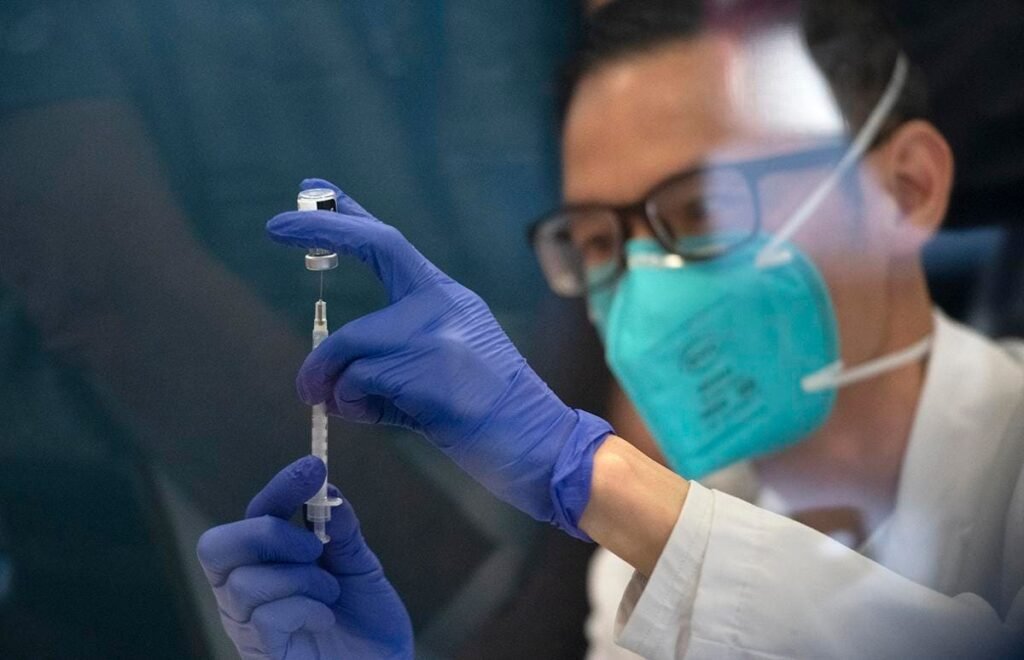Key Lessons Learned from Covid-19 and Strategies to Safeguard Public Health
Covid vaccination clinic at the Bren Events Center on the UC Irvine campus photo: Steve Zylius/UCI
Back in the winter and spring of 2020, the world was faced with the rapid escalation of the coronavirus pandemic, leading to a national crisis that shook the foundations of our daily lives. The impact was profound, with widespread loss and devastation. In response, public health experts mobilized swiftly to confront the crisis head-on.
Fast forward five years, and the numbers are staggering: Over 20 million lives lost globally. In the United States alone, the death toll has exceeded 1.2 million, surpassing the combined fatalities of the Civil, World, and Vietnam wars. Despite ongoing efforts, the World Health Organization reports that at least 1,000 individuals are still succumbing to Covid every week, with 75% of these deaths occurring in the U.S.
As we grapple with the enduring impact of the pandemic, this anniversary prompts us to reflect critically on the lessons learned, effective strategies implemented, and ways to enhance public health defenses against future health crises. One undeniable truth remains: The dedication and unwavering commitment of frontline public health workers — from healthcare professionals to support staff — were instrumental in battling a novel virus and buying precious time until vaccines became available.
The recent tragic measles outbreak in New Mexico and Texas serves as a stark reminder of the ongoing necessity for vigilant surveillance and preventive measures, such as vaccination. Valuable lessons gleaned from our experiences include:
1. A robust public health infrastructure is indispensable in combating emerging threats, proactively addressing outbreaks, and safeguarding community well-being.
2. The pandemic underscored the critical importance of swift and efficient systems for detecting and monitoring the spread of novel viruses. Genomic surveillance emerged as a crucial tool in tracking the evolution of the coronavirus and shaping targeted public health responses.
3. Diagnostic tests played a pivotal role in identifying infection cases, mapping community transmission, and informing treatment protocols. Contact tracing efforts further disrupted transmission chains by notifying potential contacts and offering essential guidance.
4. To prepare for future pandemics, the capacity for rapid, large-scale testing must be established, requiring adequate resources, trained personnel, and a stockpile of testing supplies to prevent shortages.
Lesson 2: Develop countermeasures and interventions
Prior to the availability of a Covid vaccine, public health leaders relied on a range of preventive measures to curb virus spread. These included mask-wearing, social distancing, travel restrictions, and temporary closures of schools and businesses. Despite facing criticism, these interventions undoubtedly saved countless lives.
Early in the crisis, experts leveraged historical outbreak data and innovative technologies to swiftly determine optimal intervention strategies. Advanced computer models were developed to forecast virus transmission patterns, enabling governments to make informed decisions regarding vaccination campaigns and lockdown measures.
Lesson 3: Make vaccines safe and effective for all
The rapid development, production, and distribution of Covid-19 vaccines within a year stand as a monumental achievement that averted countless fatalities. However, disparities persisted, with marginalized communities facing barriers to vaccination access due to healthcare disparities, transportation challenges, and information gaps.
Preparing for future health crises entails identifying and repurposing existing drugs and vaccines for stockpiling. A robust system must be in place to evaluate candidate treatments for safety, efficacy, and accessibility.
Lesson 4: Build and maintain trust by safeguarding communication channels
Transparent and timely communication is essential in a rapidly evolving pandemic landscape, where guidance and evidence continuously evolve. Public trust hinges on clear decision-making processes and transparent communication, crucial for fostering acceptance of vital public health measures.
To combat misinformation and nurture trust, ongoing community engagement, dissemination of verified information, and enhancement of health literacy are imperative. Collaborative efforts with stakeholders, dissemination of accurate information, and promotion of media literacy skills are vital components of this endeavor.
Lesson 5: Invest in people and partnerships
Covid laid bare deep-seated health inequities, disproportionately impacting vulnerable communities. Communities of color, elderly individuals, and those with limited resources faced heightened risks of infection, severe illness, and economic hardships. Addressing these disparities demands targeted interventions that tackle underlying systemic issues.
Community partnerships and localized engagement offer effective avenues for addressing health disparities and promoting equity. Tailored solutions that prioritize community needs can be developed through direct collaboration with affected populations.
Robust partnerships are indispensable in navigating global health crises, underscoring the importance of collaboration across academia, industry, government entities, and international organizations like the World Health Organization. As a key player in the global pandemic response, the WHO’s guidance, dissemination of epidemiological insights, and facilitation of international cooperation were pivotal in coordinating a unified global response.


